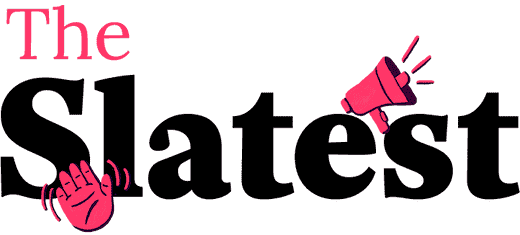Sign up for the Slatest to get the most insightful analysis, criticism, and advice out there, delivered to your inbox daily.
It’s no coincidence that President Donald Trump caved to the Kremlin’s demands for peace-through-surrender, and insisted that Kyiv do the same, on the same day that Russia launched its deadliest attack on Ukrainian civilians in nearly a year.
Then, one day later, deepening the delusions that he has long displayed about the war and his own power to affect its course, Trump called on Russian President Vladimir Putin to come to his senses and stop the killing.
“Vladimir, STOP!” Trump posted on Truth Social. “I am not happy with the Russian strikes on KYIV. Not necessary, and very bad timing.”
Quite aside from the bone-chilling familiarity (has Trump ever addressed Ukrainian President Volodymyr Zelensky by his first name?), there’s the presumption that the Kremlin leader has ever regretted blowing up civilian apartments or cared what Trump or anyone else might think about his murderousness. Trump had complained once before about Russian bombing—and then, just minutes later, he resumed blaming Ukrainians for starting the war (and, of course, Joe Biden for failing to stop it). Certainly the “peace plan” that Trump had just laid on the table should have signaled that the Russians can get away with whatever levels of violence they’d like to commit.
Trump’s plan, according to European sources who have seen the one-page outline, calls for the following:
• Russian and Ukrainian troops cease fire at their current positions on the battlefield. That means Moscow would control about 20 percent of Ukrainian territory, including the bulk of its four easternmost (and, before the war, industrial-rich) provinces in Donbas.
• The U.S. also lifts all economic sanctions that it imposed on Russia as a result of the February 2022 invasion.
• Russia is recognized as controlling Crimea (which the Soviet Union had handed Ukraine as a gift in 1954, until Putin reannexed the peninsula in 2014).
• The U.S. is barred from stationing peacekeeping troops in Ukraine after the ceasefire, and Ukraine is forbidden from ever joining the West’s NATO military alliance.
• In exchange for all this, Russia is obliged to concede … well, it seems, nothing. In fact, Russian spokesmen continue to demand that even a temporary ceasefire be preceded by a settlement of all the war’s “root causes,” which it blames entirely on Ukraine.
As one NATO official told a reporter from Politico when asked what he thought of Trump’s proposal: “Did Putin write this for him?” Another diplomat responded with an “exploding head” emoji.
Russia’s state-controlled media certainly understood the gist of the deal, writing, “It’s practically a foregone conclusion the U.S. will pull out of Ukraine talks,” and “The unity of the West is gone. Geopolitically it’s no longer an alliance. Trumpism has destroyed the Atlantic consensus confidently and quickly.”
If that isn’t Trump’s aim as well, then one can only ask: What is his aim?
A case could be made that some of these elements might be woven into a peace deal after both sides—Russia and Ukraine—are ready, or can both be pressured, to stop fighting. However, to accede to Russia’s position at the start of negotiations, with pressure only on Kyiv and no concessions from Moscow, amounts to Ukrainian surrender.
Short of such pressure or desire, a ceasefire, under Trump’s terms, would simply give Putin’s army a chance to regroup, remobilize, and at least threaten to resume an offensive toward Kyiv. Anyone who believes Putin would hold the line at Donbas, leave Kyiv’s government in place, or refrain from threatening other former Soviet republics hasn’t been paying attention to what Putin himself has been saying about his goals the past year—e.g., that Ukraine is a fiction, its people don’t exist as a separate culture, and that Russia has a legitimate interest in not only carving out a sphere of influence but re-creating the old Russian empire in the space of what was once the Soviet Union’s Warsaw Pact.
As for NATO, shortly after the 2022 invasion, Zelensky said he had “cooled off” on membership in the West’s military alliance as a trade-off for peace. He repeated the point this week. However, on both occasions, and several times in the interim, he has demanded some form of security guarantees from Western countries, asked what they might entail in the absence of a NATO slot, and heard nothing in return.
Zelensky also pointed out that, whatever Crimea’s checkered history, Ukraine’s constitution prohibits just letting it go. Trump waved away the legal niceties. If the Ukrainians want Crimea, he asked, “Why didn’t they fight for it 11 years ago” when Russian troops stormed and annexed it “without a shot being fired?”
There are a few good answers to this question. First, it’s worth noting that Zelensky wasn’t president until 2019, five years after the Crimean annexation and the subsequent incursions into eastern Ukraine by Russian special forces. Second, at the time of the annexation, Ukraine’s army had pretty much dissolved. (It would begin to rebuild, with the help of U.S. assistance and some European armies, during the Donbas wars preceding the 2022 invasion.) Third, the annexation seemed, at the time, to be a one-off event—Putin’s attempt to halt Kyiv’s pro-democracy movements from making an alliance with any Western organizations, especially the European Union.
As Putin stretched his war into an invasion of all Ukraine, the terms and stakes of the war changed. Even in the early part of the war, many residents in Donbas and Crimea regarded themselves as Russians; in a hypothetical war, they might have sided with Moscow. But once Moscow started bombing their apartments, hospitals, and other targets, sympathies shifted. Ukrainians have fought over Donbas and Crimea in the battles since.
It is worth noting that, back in 2018, during his first term as president, Trump said the U.S. would not recognize Crimea as Russian territory. As a Republican active on the Senate Foreign Relations Committee, Marco Rubio also called for a similar policy. Now he has joined Trump on the switch to Moscow. So have most of the Republicans who were on Zelensky’s side not so long ago.
Rubio was scheduled to attend the next round of peace talks along with Trump’s all-purpose emissary and fellow real-estate tycoon Steve Witkoff. But when Zelensky rejected the offer out of hand, they copped out. There would still be a U.S. delegation, but one consisting of midlevel officials who would have—and be seen as having—little to no influence on the proceedings.
This is what Rubio meant when he said earlier this week that, if one side or the other rejected peace talks, the U.S. would just “move on.” Two things stand out in that still-somewhat-ambiguous comment. First, Trump has inveighed against only Zelensky for rejecting the specific deal. (To Putin, who not only rejected it but killed dozens of Ukrainian civilians as a sign of showing what he thought of it, Trump sent only a beggar’s plea—“Vladimir, STOP!”)
Second, will Trump now “move on” by taking a merely passive stance toward the war, turning his attention to diplomatic possibilities elsewhere? Or will he take further steps toward a geostrategic alliance with Moscow, in the course of which he will likely halt further military and intelligence assistance to Ukraine, possibly letting Kyiv fall and the U.S.-European alliance—which is most challengingly focused on the fate of Ukraine—crumble?
This is probably a distinction without a difference. Trump’s favoritism toward Russia has been clear for a long time. His hostility toward Ukraine has taken on a darker intensity. The events of the past 48 hours may have hardened these trends irreversibly, making the days of even-handedness—much less a return toward alliance with Ukraine—impossible.





